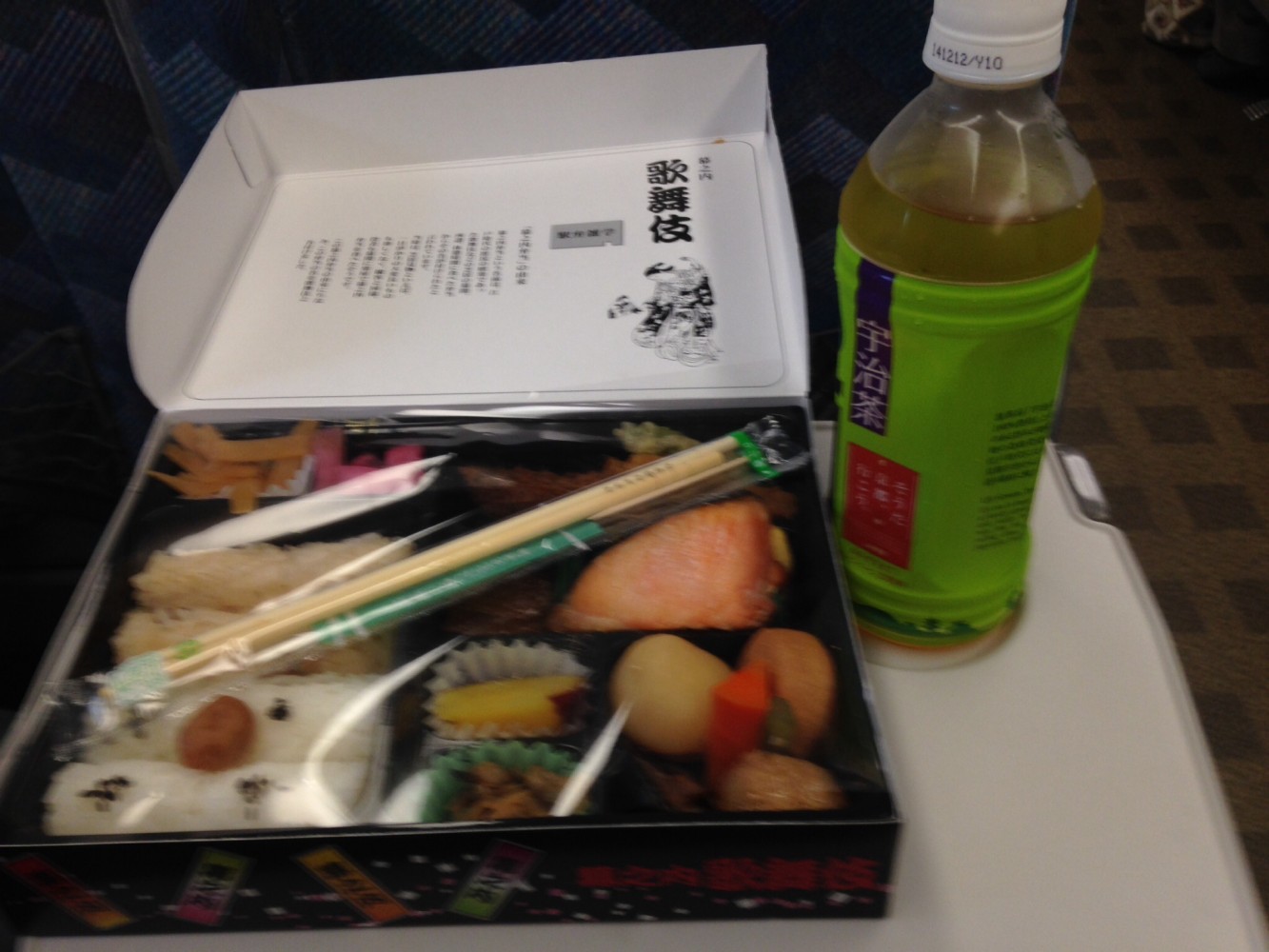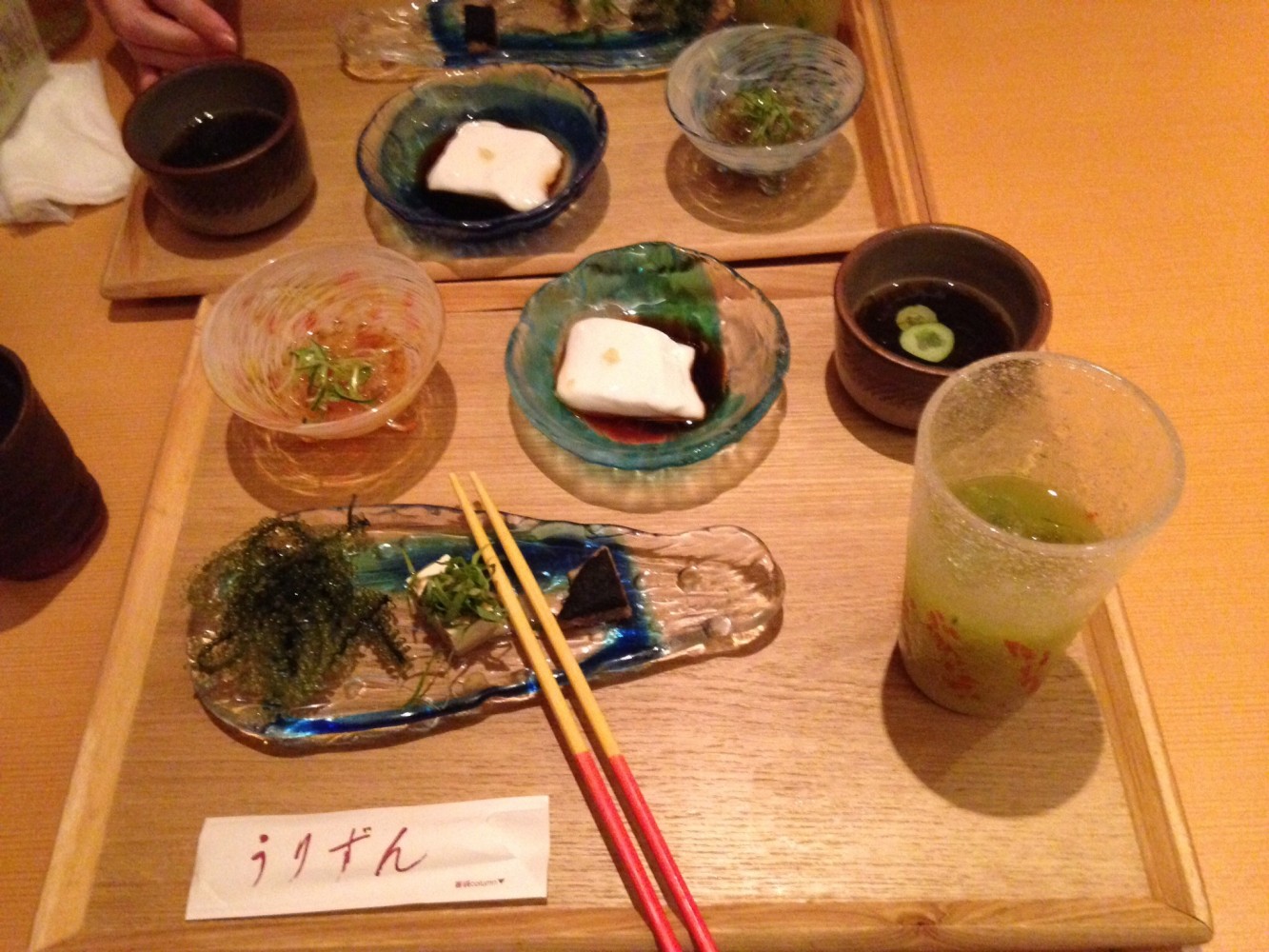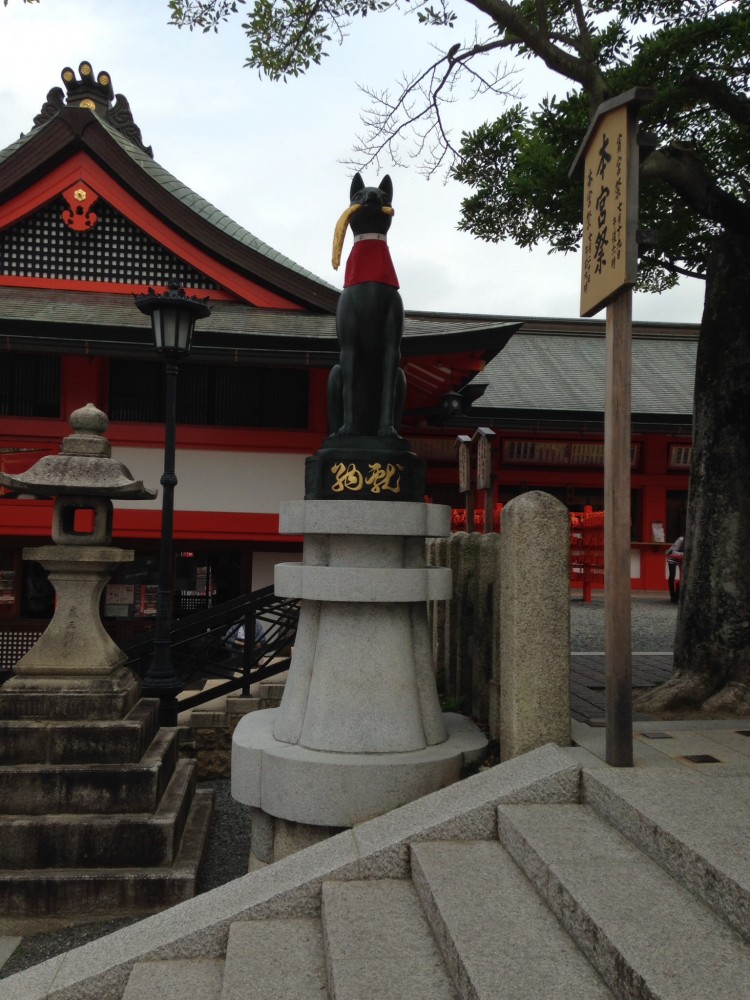いただきます Itadakemasu!

If the way to a person’s heart is through one’s stomach, then Japan has won all of us over. Food here is plentiful, beautiful, delicious, and everywhere. Like most cultures, Japanese people define themselves partly through their food. What one eats, and when one eats, is an identity statement. Take breakfast: rice, miso soup, a salad, a small amount of egg, and a little fruit was typical on our trip. If the 14 hour plane ride hadn’t convinced me I was far from home, this breakfast certainly made the point clear. I was a far cry from oatmeal and fruit or bacon and eggs, but it was delicious, or oishii, nonetheless.
We have many different lunches, but the bento box left an impression. Its multiple forms and ubiquitous presence made it a staple of our travel days. Bento points out an important principle of Japanese eating, small amounts of a large variety of foods, presented in an aesthetically pleasing form. Its style of food that seems to me to express much about Japan, but especially the notion that sustenance and pleasure can be had at the same time in the most mundane of things.

Miso soup and rice, fish and rice, pickled vegetable and rice, even ramen and rice, (although my Japanese friend Mariko, whom I met in Tokyo for dinner, thought that seemed a bit strange). Are you sensing a theme? Rice is central to Japanese food. It accompanies most meals, it is used in different forms in all kinds of different foods, you make sake with it, the inari (foxes) hold the keys to the graineries that store it.
At the same time, Japanese food culture makes it clear that Japan has a global culture. Of course American fast food is easy to find, but the popularity of French-style bakeries was a pleasant addition to our trip on many occasions. Italian-style restaurants were also common.
The Okinawan meal I shared with my friend Mariko on our last night in Tokyo was one of my favorites. It was a “healthy” meal with lots of varieties of sea weed, small portions of pork and tofu, and a soup with vegetables and brown rice.
 Food is clearly a central part of hospitality in Japan as well, with many gift shops and souvenir stands devoted to local food specialties. It is common for Japanese people traveling to see friends to pick up a local food gift to give to the person they are visiting.
Food is clearly a central part of hospitality in Japan as well, with many gift shops and souvenir stands devoted to local food specialties. It is common for Japanese people traveling to see friends to pick up a local food gift to give to the person they are visiting.
I could go on, and on, and on, but a partial list of the the fascinating food topics must include the amazing variety of pickles, teas, and soft drinks, the central role of fish in the Japanese diet (octopus on stick, anyone?), and the role food plays in ritual.
ご馳走様でした Gochisosama deshita!



